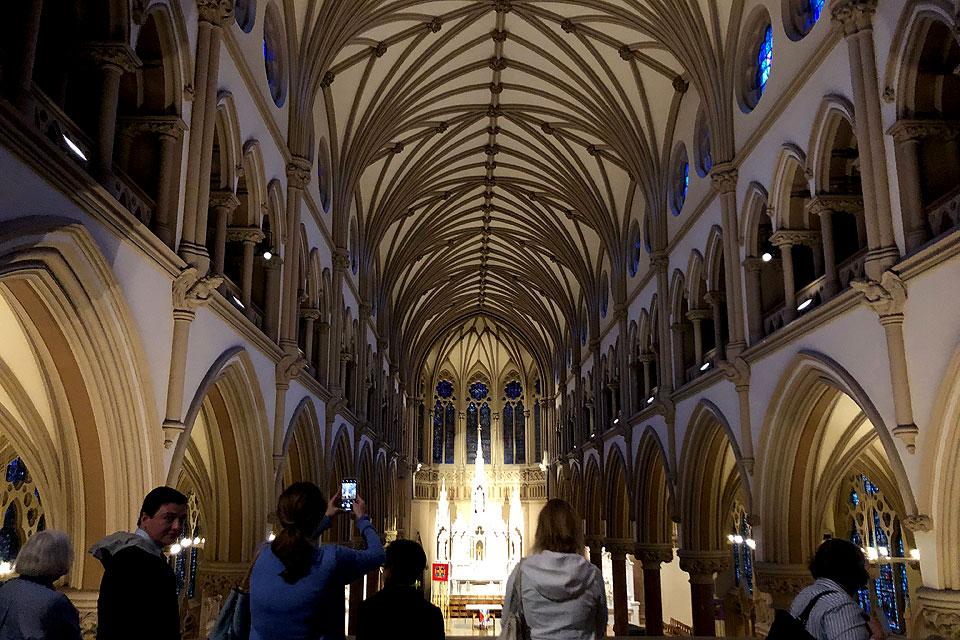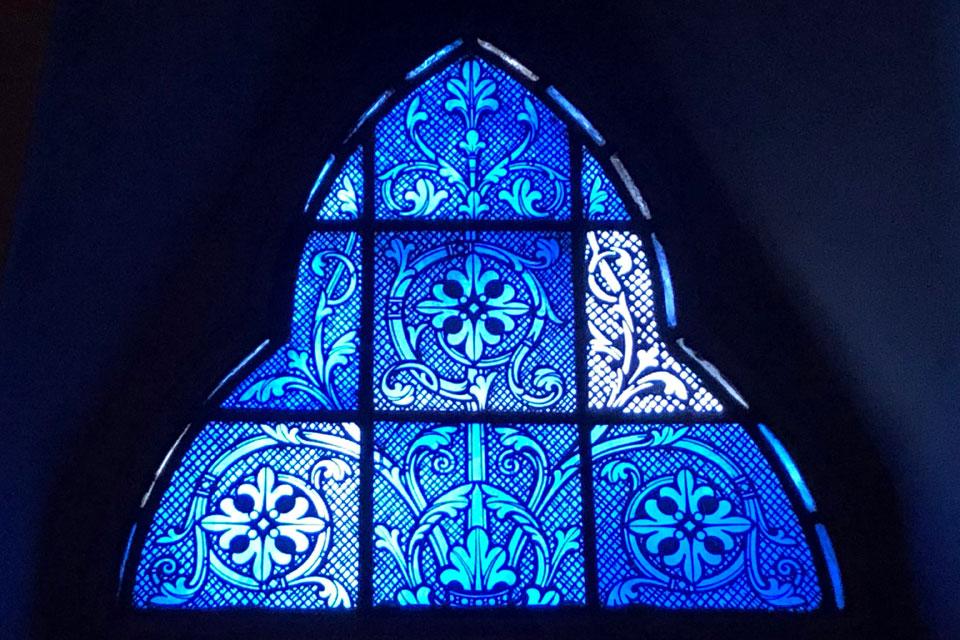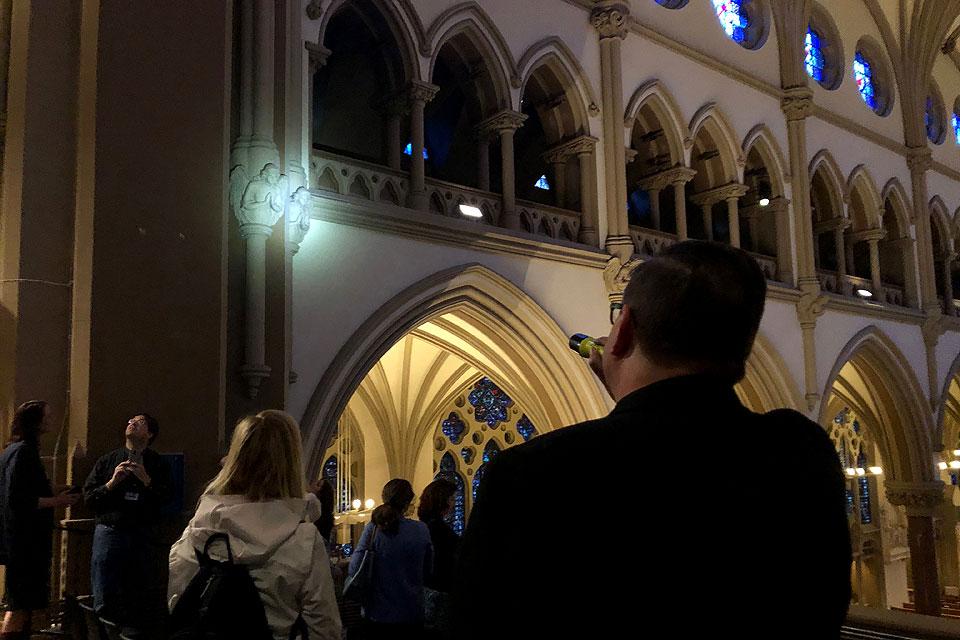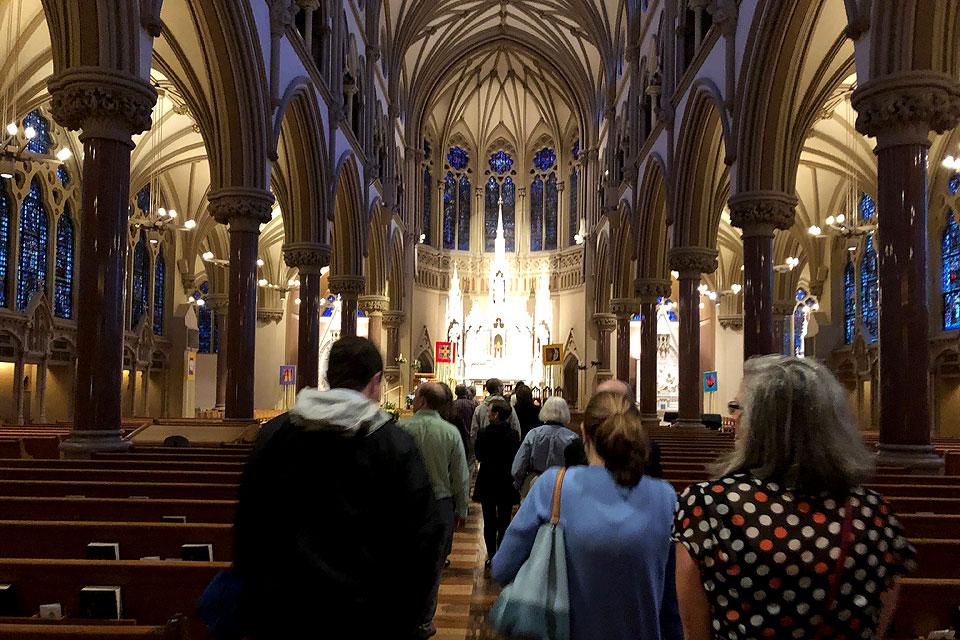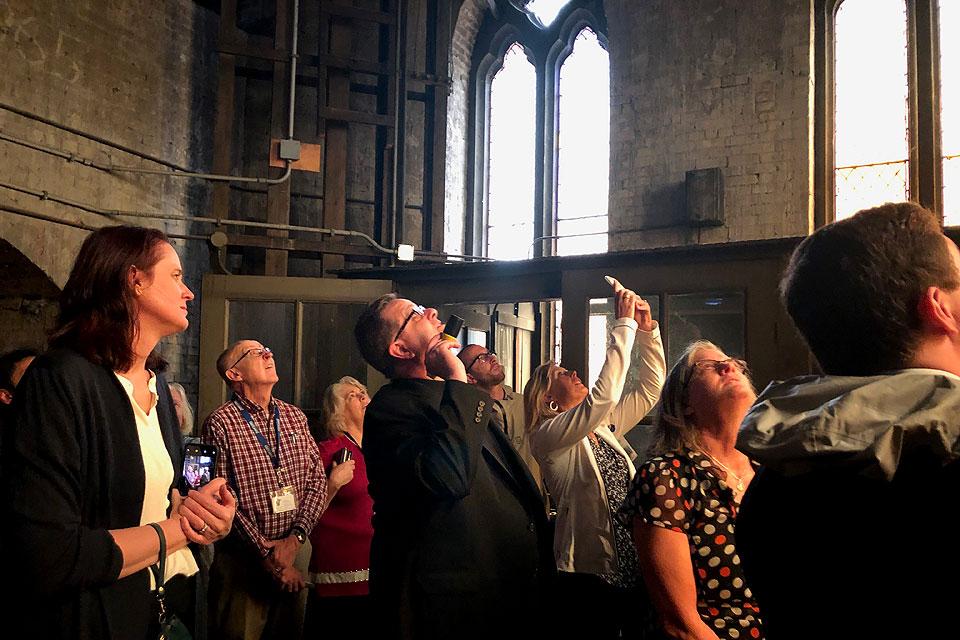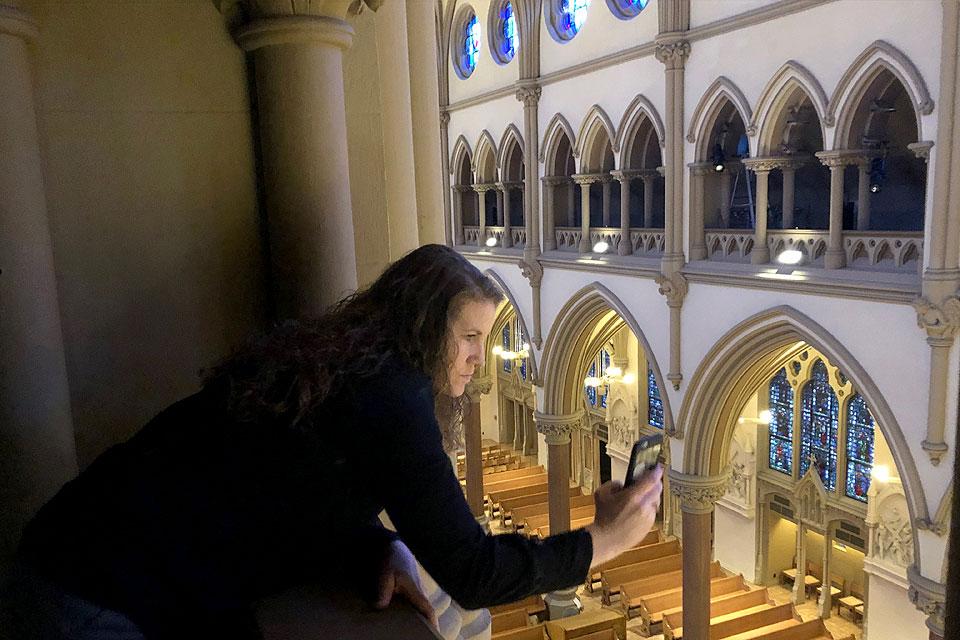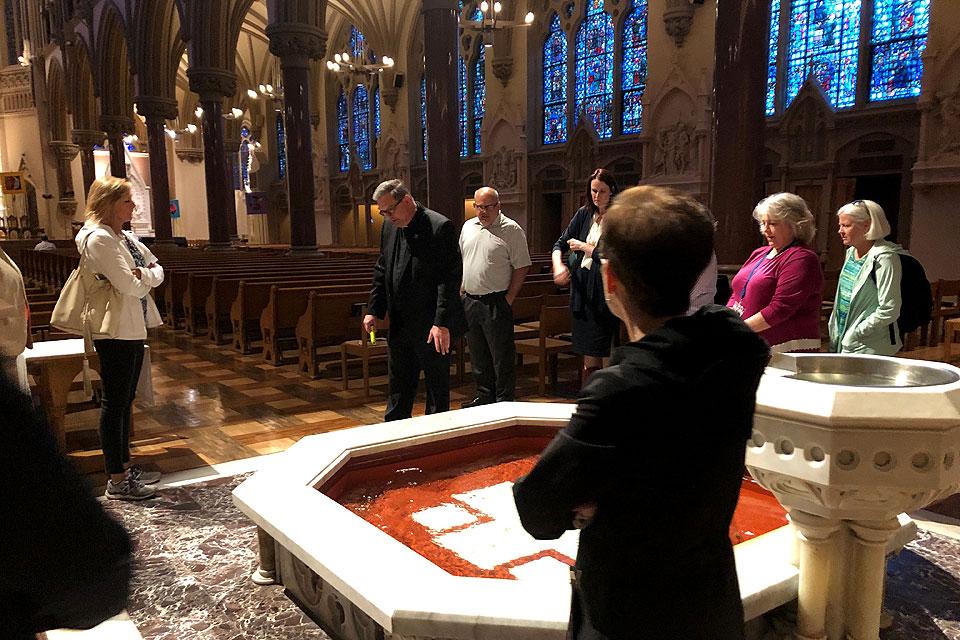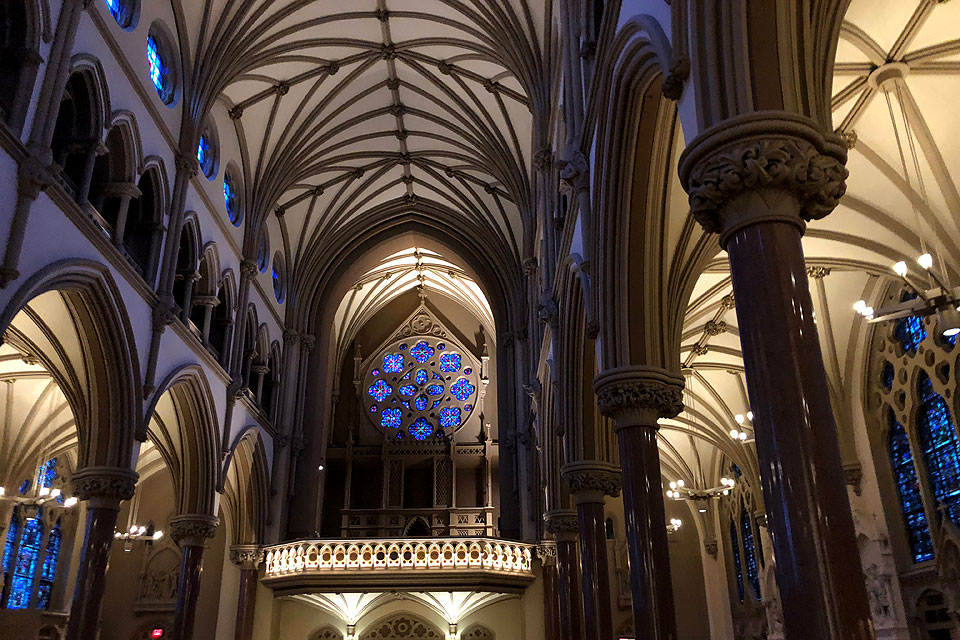'Pop-Up' Pilgrims Explore SLU History, Ignatian Spirituality
They followed in storied footsteps, making their way through SLU history on a journey rooted in Ignatian spirituality.
As part of Saint Louis University’s first “Pop-Up Pilgrimage,” students, faculty and staff members gained a new perspective on the University’s spiritual home, and had a chance to consider their own journeys toward holiness.
Guided by David Suwalsky, S.J., of the Office of Mission and Identity, the pilgrims went behind the scenes at St. Francis Xavier College Church, learning new things about themselves, the church and SLU history in the process.
“The notion of a journey towards holiness is integral to Ignatian spirituality,” Suwalsky said. “At a place like SLU, we can share with one another our experience of God and goodness with sensitivity and in a spirit of mutual understanding.”
“The journey may take you to Jerusalem or to Rome or to St. Louis,” he continued. “There are far-away places like the Cathedral of Santiago or the Shrine of Our Lady of Guadalupe, but there are also opportunities nearby.”
Following a Map Set Down by a Saint
Traditionally, a pilgrimage required of a believer to journey to a holy site, often under rigorous conditions. Famous pilgrimage routes include the road to Santiago de Compostela, the burial site of St. James the Apostle, and journeys Chartres Cathedral in France or sites in the Holy Land.
One of the most famous early works of fiction in the English, Geoffrey Chaucer’s The Canterbury Tales features stories told by Medieval pilgrims traveling to the Shrine of St. Thomas Beckett.
Many saints, including the Jesuits’ founder, thought of themselves as seekers on a religious journey.
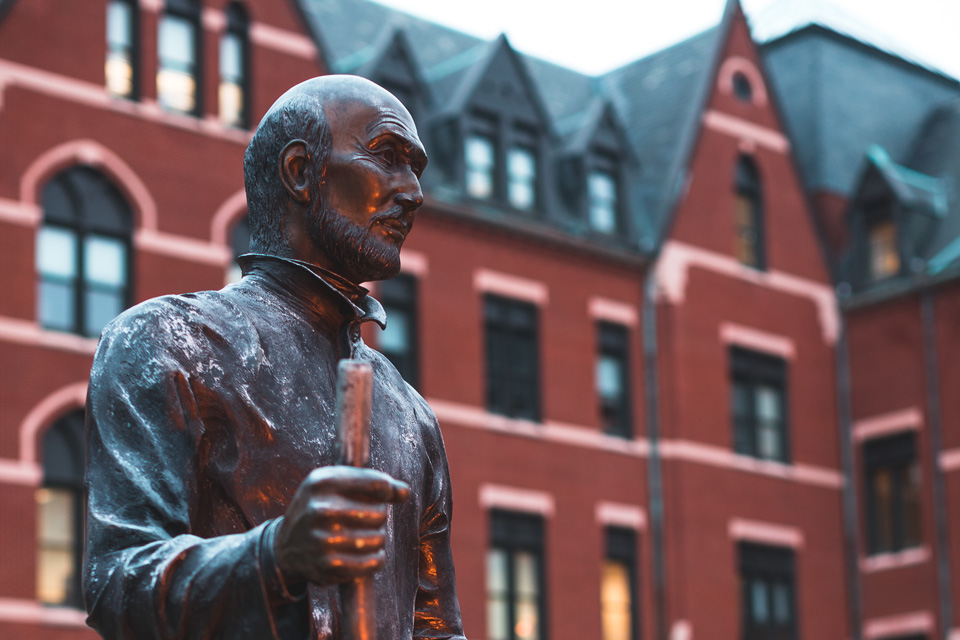
“As the striding statue of St. Ignatius in the Du Bourg quad reminds us, St. Ignatius thought of himself as a pilgrim, as a person who had been called to undertake a journey towards holiness,” Suwalsky said.
St. Ignatius referred to himself as a pilgrim in his Autobiography, he continued, and his first urge after his experience of conversion was to journey to Jerusalem so that he could walk in the very footsteps of Jesus. Even in the last years of his life while living in Rome as superior general of the Society of Jesus, Ignatius still thought of himself as a pilgrim.
“His journey towards holiness became a prayerful, interior journey,” Suwalsky explained.
SLU Community Embraces Its Pilgrims' Spirit
Earlier this year, three SLU faculty members, Craig Boyd, Ph.D., Randy Rosenberg, Ph.D., and John James, Ed.D., undertook a pilgrimage to Ignatian sties in Spain and Rome.
SLU’s Office of Mission and Identity has also hosted reading groups and presentations focused on pilgrimage throughout the year. SLU-Madrid, the University’s campus in Spain, offers an annual trip where students walk in Ignatius’s footsteps in Basque Country.
May’s Pop-Up Pilgrimage was conceived as a 21st Century way to pay homage to Ignatius’s journey centuries before.
“We are all on a journey of holiness or, at least, authenticity and wholeness,” Suwalsky said. “Without our pilgrim Belgian Jesuits, there would be no Jesuit identity at SLU. They were joined over decades by Jesuits from around the world and that continues to this day. Every student is on a journey of discovery and every member of the faculty and staff shares of themselves the fruits of their life journeys.”
“We also send forth many of our community to serve others just as Jesuits and others were sent here to Saint Louis University,” he continued. “The sending as well as returning and then the sharing of experience with others is how this community of learning also becomes a community of faith.”
Choosing the Familiar as a Place to Discover the Unknown
College Church, a St. Louis and University landmark, offered Suwalsky and his fellow pilgrimage organizers a place to surprise pilgrims with the overlooked nuances and details of a space many know intimately.
The pilgrims journeyed into the church’s bell tower to glimpse the names of Jesuits who had left their mark on the tower’s walls over the years. They viewed the church from the Monk’s Gallery above the church’s nave and learned about the symbolism and history of the church’s windows, sculptures and other sacred details.
“In the Spiritual Exercises, Ignatius encourages the retreatant to walk with the Lord by use of imagination,” Suwalsky explained. “The contemplatios, which encourage the use of our senses in our prayer to draw deeper insight into the life of Christ, are first and foremost invitations to become a pilgrim in the Holy Land even if one has never been there.”
While many SLU community members and alumni have celebrated at College Church masses or have visited the church, the Pop-Up Pilgrimage gave its pilgrims the chance to reconsider a place many know well.
“Anyone can journey to the College Church for a quiet moment,” Suwalsky said. “Emil Frei, who designed the stained glass windows of College Church, once stated that the primary purpose of the windows was the ‘create an atmosphere of devotion.’ The beauty of the church is meant to encourage not only prayer but, perhaps more importantly, to encourage peace of heart.”
Founded in 1818, Saint Louis University is one of the nation’s oldest and most prestigious Catholic institutions. Rooted in Jesuit values and its pioneering history as the first university west of the Mississippi River, SLU offers nearly 13,000 students a rigorous, transformative education of the whole person. At the core of the University’s diverse community of scholars is SLU’s service-focused mission, which challenges and prepares students to make the world a better, more just place.
Story and photos by Amelia Flood, University Marketing and Communications


















